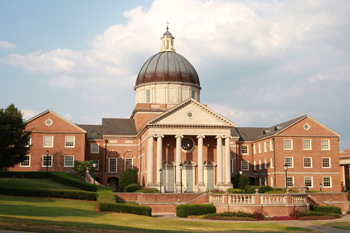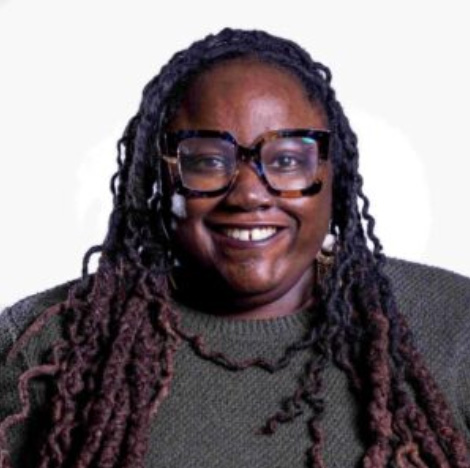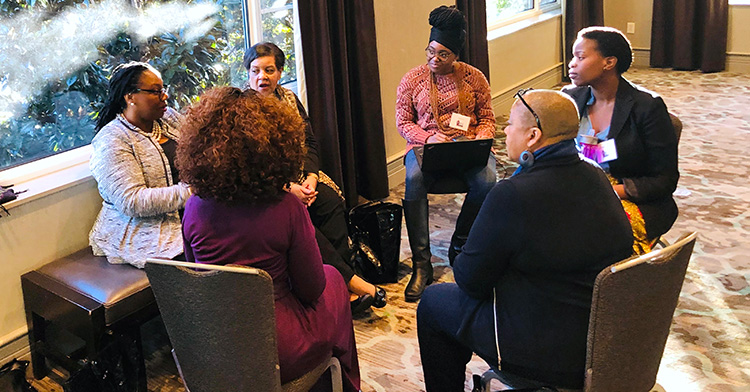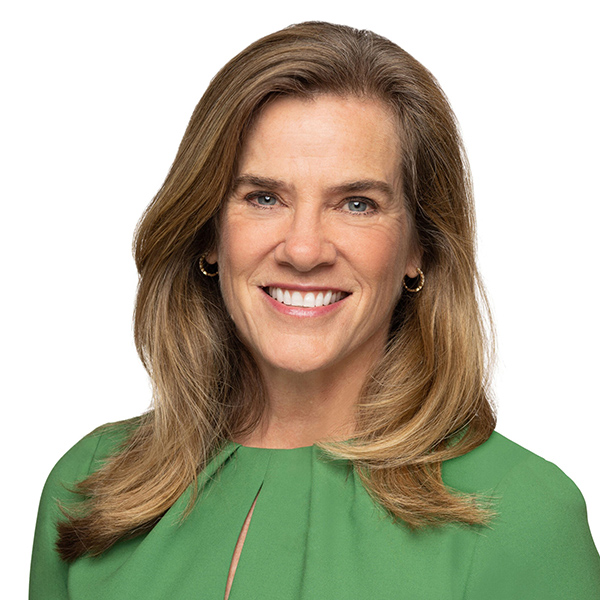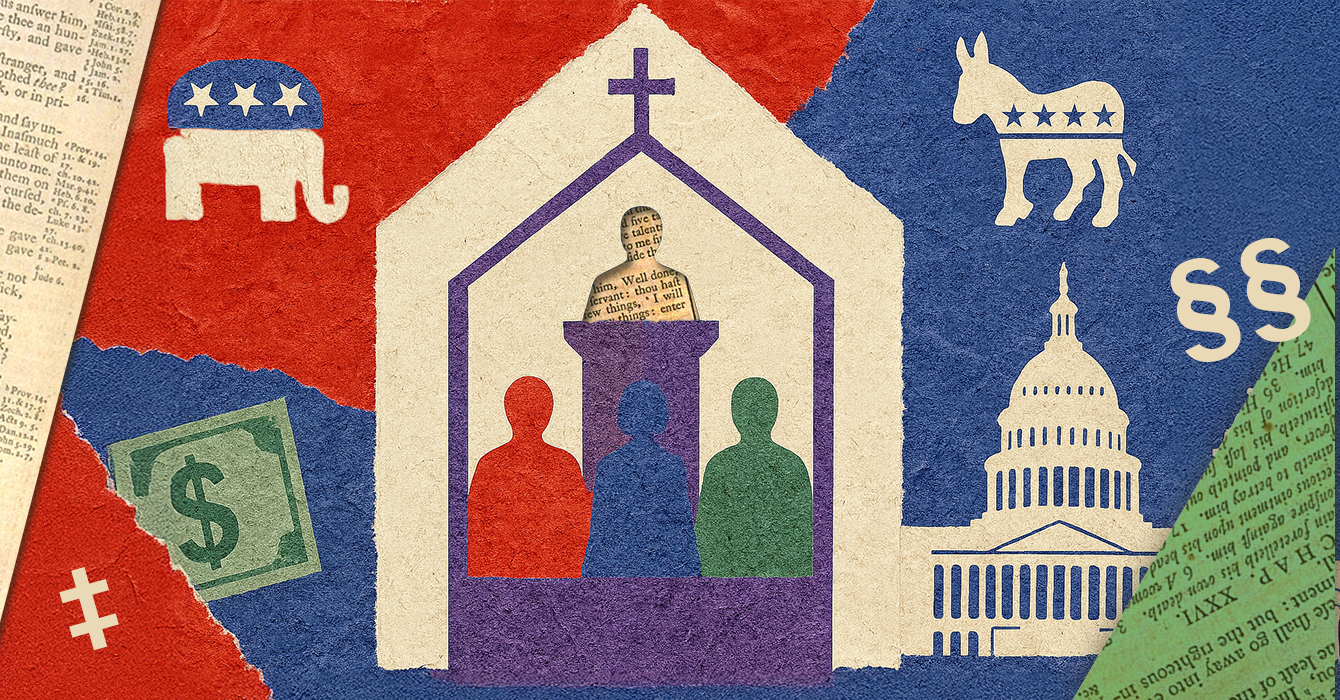Imagine that you get to start a new seminary from scratch. How would you do it?
Timothy George faced that question in the late 1980s, when he was approached to be the founding dean of a new divinity school at Samford University in Birmingham, Ala. He had been teaching at Southern Baptist Theological Seminary in Louisville, Ky., content with his life as a theologian, professor and writer. He had no ambitions to be an administrator.
Then he heard about the vision for Samford’s new school. Although Samford is a historic and serious Baptist university, the divinity school was intentionally not to be a Baptist seminary. Instead, as the school’s Presbyterian benefactor, Ralph Waldo Beeson, had proposed, it would be interdenominational, welcoming students and faculty from a variety of traditions.
A successful businessman, Beeson had $75 million to give “for the Lord’s work” and wanted a world-class institute of theological education in his adopted city of Birmingham. Beeson’s father, John Wesley Beeson, had been a Methodist lay preacher and college administrator in Mississippi and his aunt had been a Methodist missionary in China.
Though he had no formal theological education, Beeson, true to his family history, was a committed ecumenist, dedicated to a generous orthodoxy and to global Christianity. His founding gift -- the largest in Samford history and one of the largest in theological education -- still covers more than 80 percent of Beeson Divinity School’s budget. Every student receives scholarship support, and in accordance with the terms of Beeson’s gift, the student body is kept small. Beeson envisioned that the school would be broadly catholic, and George, long committed to catholicity, was hooked.
Like Beeson, George had been exposed to a variety of theological influences in his formative years. Growing up in Chattanooga, Tenn., he attended an independent, fundamentalist Baptist church and went to college at the University of Tennessee at Chattanooga. For divinity school, his professors encouraged him to consider academic institutions outside his own Baptist tradition, so he went to Harvard University, where he received a M.Div. and a Th.D.
At the time, Harvard Divinity School was best known for liberal theologians such as Gordon Kaufman, known for his work on God language and religious naturalism; and Harvey Cox, author of “The Secular City.” George, however, fell under the influence of the late Arthur McGill, who studied and wrote about death and suffering; and David Steinmetz, just starting out as a specialist in the history of Christianity in late medieval and early modern Europe.
George came to see that such ancient practices as monasticism, iconography and admiration of Mary and the saints were no threat to Baptists, but could enhance such tenets as the priority of Scripture and vibrant personal faith.
As the newly minted school’s newly minted dean, George made one of his first priorities the building of a chapel that would shape a worshipping community’s imagination. The result, Hodges Chapel, is not only a “sermon in stone” like the ancient cathedrals, but also an argument in stone.
Consecrated in 1996, the building testifies to a broad and expansive theological tradition. Murals depict Biblical scenes such as the Nativity and the Crucifixion but also events such as Martin Luther nailing the 95 Theses to the church door in Wittenburg in 1517. Six 20th century martyrs, one from each continent, are memorialized in statues.
High overhead, 90 feet above the floor, lining the cupola, is a vision of the saints in heaven. Early Beeson faculty presented papers arguing for whom to include: St. Augustine and his mother Monica made the cut.“The Venerable Bede did not,” Vickie Gaston, the chapel curator, told me with a sigh.
The finalists -- from Felicity and Perpetua in the ancient church to William Carey, the father of modern missions -- are irreverently, but lovingly, called the “Sweet Sixteen” (and the entire chapel, “the Redneck Vatican”) by many at Beeson.
But as Gaston said, Hodges Chapel is unique. Catholic and Orthodox chapels have murals but never depict reformers. Protestant churches may honor heroes of the Reformation and the 20th century but not Catholics, and rarely do they have murals. Hodges Chapel, though, may be the most catholic chapel in the world: It includes saints who wouldn’t normally include one another.
Regarding his vision of leadership, George says he’s still not an administrator -- but he hires people to do the work he cannot. Instead, he focuses on three things: faculty hires, chapel worship and the divinity school’s publications.
The first is not surprising; the latter two are. George is a sort of chapel dean, planning worship throughout the semester and personally attending to the liturgical formation of every student. The school’s media productions are snappy, theologically deep and technologically up-to-the-minute. Though George does not use a computer, he presides over a weekly podcast (with a technical assistant, of course). As a leader, he plays to his strengths and patches in around his weaknesses.
When George came to Beeson in 1988, the battles then underway within the Southern Baptist Convention were playing out in Baptist seminaries. Baptist theological education was split, with a conservative rising tide rooting liberals out of existing seminaries and newer, more liberal seminaries reacting to the takeover.
Although Beeson is theologically conservative, George is no belligerent, and he found neither trajectory palatable. So he chose another way. Beeson would be neither a liberal reaction nor a place where liberals were unwelcome (George recounts a phone call he received from an irate conservative who asked him whether he lets women preach in class. “Let them? We make them!”).
Instead, it would be an ecumenical seminary at a Baptist university, a place where Catholic architecture and Orthodox iconography are used to praise iconoclastic reformers and modern missionary heroes.
And it would be a place of living tradition. Given its location in Birmingham, for example, the school pursues what George calls a “stewardship of geography,” one grounded in that city’s turbulent history.
One recent graduate, a member of the class of 2007, was Carolyn McKinstry, who as a teenager survived the September 15, 1963, bombing of Birmingham’s 16th Street Baptist Church. Imagine what Beeson students learn when they study and become friends with a living icon of history.
Likewise, the day I visited the chapel, alumni read prayers in Kazakh, Chinese and Arabic, the languages of the dangerous places where they serve as missionaries. George mentioned that the martyrs Beeson honors are not just the famous ones in stone: they are also alumni who have served abroad and paid with their lives. “They show us what it means to give your life for Christ.”
Indeed they do, as do all the saints before them.


